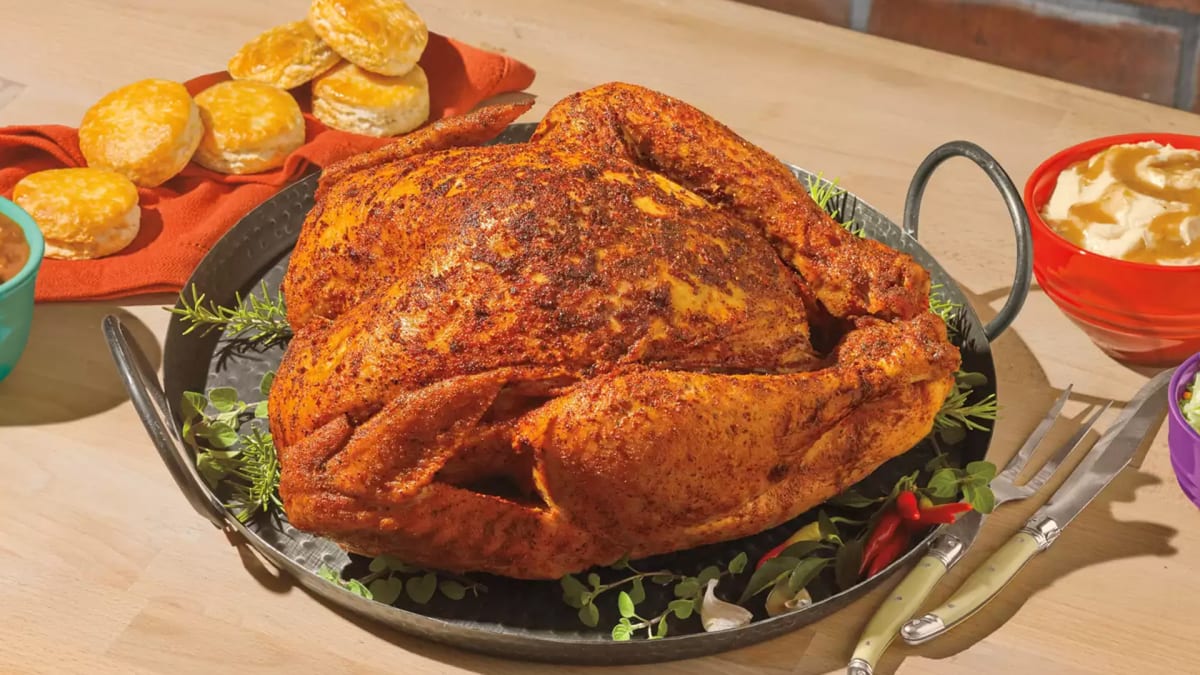
With Thanksgiving and Christmas on the horizon, families and friends are already making plans to gather and celebrate the holidays.
While getting festive is the way Americans roll during the holiday season, know that chaos has a way of turning into calamity if you’re not careful about holiday risks around the house.
A few cases in point:
--- An average of 1,700 cooking fires occur on Thanksgiving Day each year, more than three times the average number of cooking fires on any other day of the year.
--- According to the U.S. Consumer Product Safety Commission, fires involving dry Christmas trees and holiday candles result in nearly $56 million in property loss annually.
--- Additionally, there are approximately 160 decorating-related injuries every day during the holiday season, “with almost half of the incidents involving falls,” the CPSC reported. “In 2019 alone, about 14,800 people went to the emergency room for injuries related to holiday decorating.
--- Turkey fryers generate specific risks. Since 1998, the CPSC registered 222 fire, scalding, or burn incidents involving turkey fryers, resulting in 83 injuries and $9.7 million in property loss. The National Fire Prevention Association "strongly discourages the use of turkey fryers, as they can lead to severe burns, injuries, and property damage."
Staying Safe for Santa This Holiday Season
Home safety professionals say a healthy dose of preparation can keep any homestead safe from health hazards during the holidays.
Take the preventive action steps to keep holiday risks out of harm’s way over the next two months:
Take care of your tree. According to Hippo, a smart home security services company, 52% of homeowners who are decorating for the holiday season will put up a live tree, but only 16% say they’ll water it daily as recommended, which is a leading risk of house fires during the holiday season.
A pro tip - make sure to monitor your tree for freshness.
“The fresher the tree the less likely it will pose a fire hazard,” said Hippo home insights expert Courtney Klosterman. “Water it daily and change the water every few days to maintain ample freshness. You can tell when a tree is getting too dry by touching the needles, spray the needles with water in a spray bottle for additional hydration.”
If you plan to be away from home for an extended period of time during the holidays and have a live tree in your home, have a neighbor periodically come by to water it. “Either that or take your tree down early,” Klosterman advised.
Focus on electricity-based risks. Americans love to decorate their homes for the holidays, as it makes the house warm and festive. Keep in mind that decorations like lighting, wreaths, trees, and garlands can also be safety hazards.
“With outdoor string lights, safely attach lights to your house with clips that are made for it; avoid hammering tacks or nails into electrical cords,” Klosterman told TheStreet. “Inspect your strings of lights for damage like frayed wires or missing bulbs. If lights can't be repaired, discard them immediately.”
When setting up outdoor inflatable decorations, prevent electric shock by plugging any outdoor inflatable decorations or lighting into circuit protectors with GFCI (ground fault circuit interrupters).
“With any electrical cords, prevent trip and fall risks by tucking away cords or decorations that may be on the ground or floor,” Klosterman added. “Also, observe all ladder safety best practices whether you’re indoors or out.”
Be extra careful with holiday cooking – especially turkey frying. According to Hippo, 28% of homeowners say they’ve experienced damage to their home related to holiday entertaining and/or cooking accidents.
Prevent those risks by taking some common-sense steps.
“Never deep-fat fry a turkey indoors,” Klosterman stated. “This includes your garage or any other outbuilding.”
Also, keep a fire extinguisher handy when cooking. “Stashing one under the kitchen sink is a great spot,” Klosterman added. “Make sure to have working ventilation in the kitchen - either above or near the stove and change the batteries in your smoke alarm.”
Planning your Holiday Display
Safety experts advise planning your display according to the number and location of available outlets and avoiding overloading electrical outlets.
“Use lights that have been tested for safety – look for a certification mark from UL, CSA, ETL, or other nationally-recognized laboratories,” said Travelers Insurance vice president of personal insurance property Jennifer Wilbert, “Consider using LED lights when possible – they run cooler, use less energy and last longer than incandescent lights.”
Also, never exceed the maximum number of strings or devices that may be linked together, as indicated on decoration packaging. “Carefully inspect all lights and decorations for cracks, damaged sockets, and loose or bare wires prior to use – these defects can cause a serious fire or shock,” Wilbert said.
Decorating Safely
When decorating the outside of your home, keep yourself, your decorations, and equipment at least 10 feet from power lines.
“Make sure decorations are well-ventilated, protected from weather, and a safe distance away from flammable items,” Wilbert said.
Use wooden or fiberglass ladders when putting up electrical décor and lights outside as metal ladders conduct electricity. “Make sure to unplug electric lights, devices, and decorations before installing or replacing bulbs, changing parts, or attempting other repairs,” Wilbert noted.
Plug all outdoor lights and decorations into ground-fault circuit interrupters (GFCIs) to reduce the risk of electric shock. “Portable GFCIs for outdoor use can be purchased where electrical supplies are sold,” she added.







